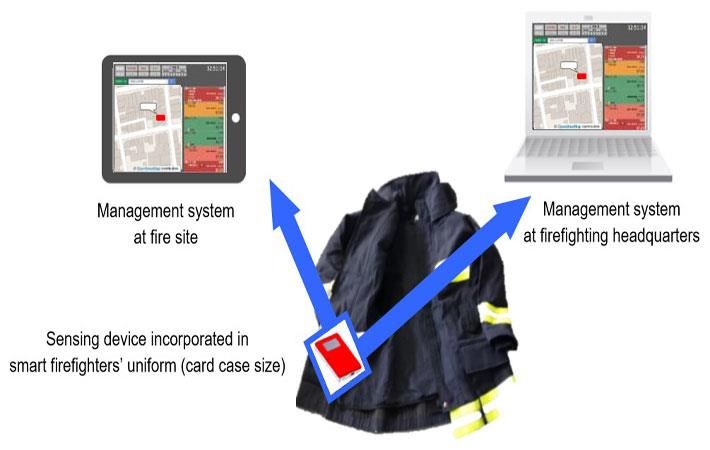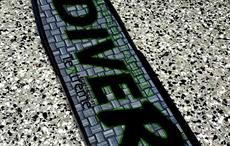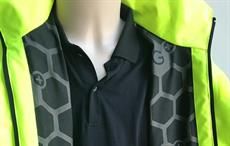
The predictions are based on the estimates of deep body temperature derived from an analysis of data provided by the new smart uniforms. Developed following experiments by its co-research partner Osaka City University in collaboration with Osaka Municipal Fire Department, the SPS will be able to warn on-site firefighters and their headquarters when body data collected and transmitted by the smart uniforms indicates there is a risk of heatstroke.
Teijin will present the smart firefighters’ uniform and the SPS at Riscon Tokyo, the largest exhibition of risk management solutions in Japan, which is scheduled to be held during October 11-13. At the exhibition, the company will demonstrate various firefighting scenarios using the new smart firefighters’ uniform and SPS.
The company aims to have the new solutions adopted for use as early as 2019. Leveraging the know-how of the entire Teijin Group, the company will further develop the functionality of the SPS, aiming to position it as part of a total solution for firefighters’ safety that will include processes such as firefighter positioning management.
The smart firefighters’ uniform incorporates a card case-sized sensing device, which was in turn developed by Teijin in conjunction with Infocom Corporation, the IT business of the Teijin Group. The device monitors the temperature and precise position of firefighters and transmits the resulting data in real time to management systems at the scenes of fires and to firefighting headquarters, where it can be analysed to accurately estimate deep body temperature and thereby ensure firefighters’ safety. The uniform uses Teijin’s heat-resistant, flame-retardant meta-aramid fiber Teijinconex and high-tenacity para-aramid fibres such as Technora. The outer layers are made of Teijin’s flame and impact-resistant polycarbonate resin Panlite.
Heartbeat measurement is conventionally used to predict the risk of heatstroke, however the varying physical constitution and mental state of individual firefighters can significantly affect measured values. To develop the algorithms required to accurately estimate deep body temperature, experiments were conducted by Osaka City University with the cooperation of Osaka Municipal Fire Department involving a wide age range of firefighters—from those in their twenties to their fifties—donning the smart uniforms in fire training sites and climate chambers. The demonstrations yielded data which showed that the deep body temperature estimated by smart firefighters’ uniforms at fire sites and actual deep body temperatures are very similar. The results analysed and verified by Teijin, enabling the creation of the new system that can now predict and manage the risk of heatstroke as well as issue warnings to firefighters, and allow remote managers to monitor firefighters’ positions and conditions.
The flame-retardant protective clothing worn by firefighters will protect themselves from fire tends to trap heat deep in the body giving rise to the risk of heatstroke, particularly in summer. Teijin’s newly-developed uniform incorporates wearable devices but it was found difficult to predict heatstroke purely on the basis of cardiac rate and body temperature measured by wearable devices owing to the differences in physical constitution and physique among individual firefighters. (RR)
Fibre2Fashion News Desk – India

